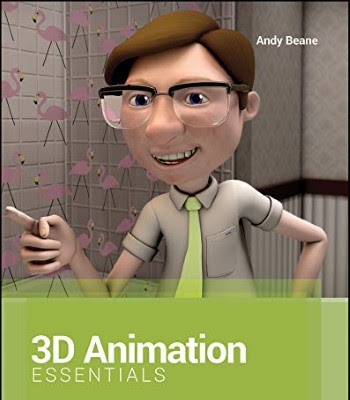3D Animation Essentials:Tools, Tips, and Techniques
3D animation is a process of creating moving images in a three-dimensional digital environment. By using specialized software, animators can create realistic or imaginary characters and worlds that can be manipulated in any way they choose. While the basic principles of 3D animation are the same as those of 2D animation, the process is much more complex. In order to create a convincing illusion of movement, animators must have a strong understanding of the mechanics of movement and the software they are using. With the right tools and techniques, however, anyone can create impressive 3D animations. In this article, we will go over some of the essential tools and techniques you need to get started in 3D animation.
1. 3D Animation Essentials:Tools, Tips, and Techniques 2. The basics of 3D animation and the various software programs available 3. Tips and techniques for creating successful animations 4. The benefits of 3D animation and how it can enhance your work 5. The different types of 3D animation and how to choose the right one for your project 6. How to create 3D animations that are both creative and professional 7. The future of 3D animation and where it is heading
1. 3D Animation Essentials:Tools, Tips, and Techniques
Assuming you want a traditional essay format: Every animation studio has different tools, tips, and techniques that they use in order to create their unique product. Some of these are general things that are used in almost every 3D animation, while others are more specific and are used depending on the project. Knowing what tools, tips, and techniques are available is essential for any animator, whether they are just starting out or are experienced. One of the most important tools for an animator is their software. There are many different software programs that can be used for 3D animation, and theanimator needs to find the one that works best for them. Each software has its own strengths and weaknesses, and the animator needs to know how to use them in order to get the most out of them. Another important tool for animators is their hardware. While the software is important, the hardware is what allows the animator to actually create the animation. Without the right hardware, the animator will not be able to create the quality of animation that they want. Another important aspect of 3D animation is tips and tricks. These can be things that the animator uses to make their job easier, or they can be ways to make the animation look better. There are many different tips and tricks that an animator can learn, and it is important for them to experiment with different ones to find the ones that work best for them. One of the most important tips for an animator is to always test their animation before they release it. This allows them to catch any mistakes that they may have made and to fix them before the animation is seen by the public. Techniques are another important part of 3D animation. These are the methods that the animator uses to actually create the animation. There are many different techniques that can be used, and the animator needs to find the ones that work best for them. One of the most common techniques is keyframing, which is when the animator sets keyframes at different points in the animation and then interpolates between them. This allows the animator to have full control over the animation and to create smooth animations. Another technique that is often used is motion capturing, which is when the animator records real-life movement and then uses that data to animate their character. This is often used for things like walk cycles, as it can be difficult to keyframe these accurately. There are many different tools, tips, and techniques that are used in 3D animation. These are essential for any animator, whether they are just starting out or are experienced. Knowing what is available and how to use it is essential for creating the best possible animation.
2. The basics of 3D animation and the various software programs available
A successful 3D animation requires both the artist's eye and the ability to create fluid motion with the characters. It's important to have an understanding of the basic principles of 3D animation before starting to use any software. This section will cover the basics of 3D animation and the various software programs available. When animating in 3D, you are working with a virtual environment that is built from polygons. Polygons are the basic shapes that make up all 3D models, and they can be connected together to create more complex shapes. The more polygons a model has, the more detail it can include. However, more polygons also means that the model will take longer to render. There are many different software programs available for 3D animation. Some of the most popular programs are Autodesk Maya, 3ds Max, and Blender. Each program has its own strengths and weaknesses, so it's important to choose the right one for your project. Maya is a popular choice for character animation, as it includes many tools for creating complex motion. 3ds Max is a good choice for architecture and product visualization. Blender is a free and open-source program that is popular for its flexible interface and powerful modeling tools. No matter which software program you choose, the basics of 3D animation are the same. You'll need to start by creating a 3D model of your character or object. Once the model is complete, you'll add bones to the model to give it a skeleton. You can then start animating the character by moving the bones to create the desired motion. The key to successful 3D animation is to have a clear understanding of the principles of animation and the software you're using. With practice, you'll be able to create fluid, realistic motion that brings your characters to life.
3. Tips and techniques for creating successful animations
The success of any 3D animation depends on the skill of the animator. To create a successful animation, there are some techniques and tips that every animator should know. Firstly, it is important to have a strong understanding of the principles of animation. These principles include things like timing, percieved motion, and exaggeration. If an animator can apply these principles correctly, they will be well on their way to creating a successful animation. Secondly, it is important to understand the software that you are using. This may seem like a no-brainer, but many animators get so caught up in the creative process that they forget to learn the ins and outs of their software. This can lead to problems down the line, so it is always best to take some time to learn the software thoroughly before beginning any animation project. Finally, it is important to have patience. Animating is a time-consuming process, and it is important to be patient in order to create a successful animation. Rushing through the process will likely lead to a less-than-optimal final product. By following these tips and techniques, animators can create successful 3D animations.
4. The benefits of 3D animation and how it can enhance your work
3D animation can help your work in a number of ways. First, it can add another level of depth and dimension to your work. This can make it more realistic and engaging for viewers. Additionally, 3D animation can help add a sense of motion and life to otherwise static work. This can make it more visually interesting and exciting to watch. Finally, 3D animation can be used to create special effects and elements that would otherwise be impossible or difficult to create. This can help you take your work to the next level and make it truly unique.
5. The different types of 3D animation and how to choose the right one for your project
There are three main types of 3D animation: skeletal animation, interpolated morph animation, and solid modeling animation. Skeletal animation is used to animate characters and creatures by manipulating a skeleton made up of bones. This is the most common type of 3D animation and is used in many popular animated movies and video games. Interpolated morph animation is used to animate objects that change shape, such as liquids or cloth. Solid modeling animation is used to animate rigid objects, such as cars or buildings. When choosing the right type of 3D animation for your project, you need to consider the type of object you are animating and the level of detail you need. For example, skeletal animation is well suited for animating characters and creatures because it can achieve a high level of detail. However, it is not well suited for animating liquids or cloth because these objects change shape. Conversely, interpolated morph animation is well suited for animating liquids and cloth because it can capture the fluid movement of these objects. However, it is not well suited for animating characters and creatures because it cannot achieve the same level of detail as skeletal animation.
6. How to create 3D animations that are both creative and professional
Any successful 3D animation will have creative and professional aspects to it in order to stand out and be memorable. Here are some tips on how to create both: 1. Make sure your idea is original and well thought-out. It should be something that you’re passionate about and that will capture your audience’s attention. 2. Plan everything out in great detail before you start animating. This will save you a lot of time and frustration in the long run. 3. Use high-quality software and resources. This will help your animation look polished and professional. 4. Put your own spin on things. This is what will make your animation unique and special. 5. Take your time and don’t rush the process. Quality is more important than quantity. 6. Ask for feedback from others. This will help you improve your animation and make it the best it can be.
7. The future of 3D animation and where it is heading
It's hard to say exactly where the future of 3D animation is heading. With the ever-changing landscape of technology, it's hard to predict what new advances will be made that could change the field entirely. However, there are a few things that we can say for sure. For one, the interaction between humans and digital characters is only going to become more realistic and lifelike. With the advent of new motion-capture technology, we are able to create animations that are incredibly realistic, and this trend is only going to continue. Another big trend that we're seeing is the increasing use of 3D animation for advertising and marketing purposes. 3D animation is a great way to grab people's attention and really showcase a product or service in a unique and eye-catching way. Finally, we're also seeing a trend towards using 3D animation for educational purposes. By using animation to explain complex concepts, we can make learning more fun and engaging for students of all ages. So what does the future hold for 3D animation? Only time will tell. But one thing is for sure: it is an exciting and ever-evolving field that shows no signs of slowing down.
3D animation is a fascinating and rewarding field. By following the tips and techniques in this article, you can start to create your own 3D masterpieces. With the right tools and a little practice, you'll be on your way to becoming a 3D animation pro.





